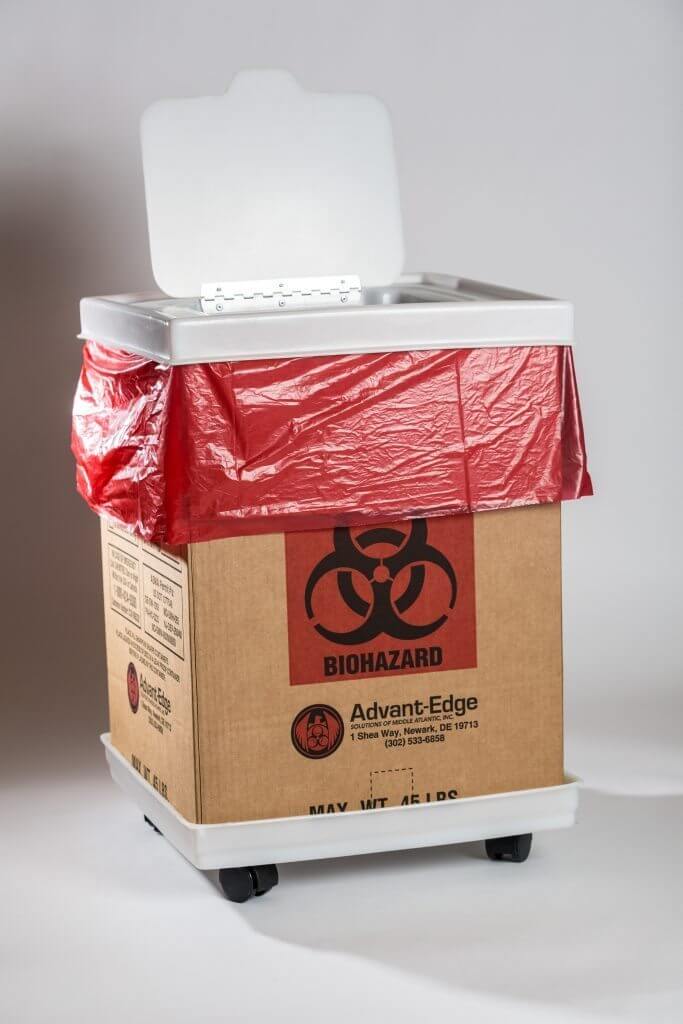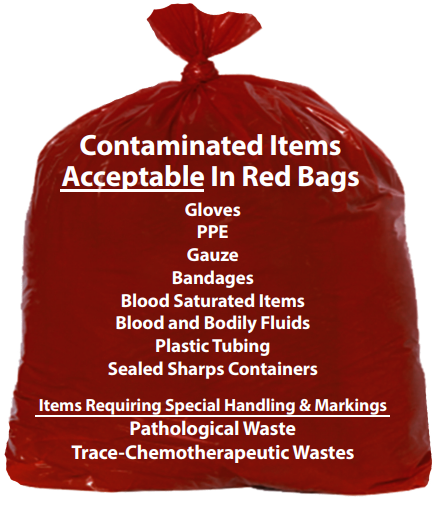Biohazard Bags: The Critical Inner Packaging for Medical Waste Compliance

In regulated medical waste (RMW) management, biohazard bags play a more critical role than most people realize. These bags aren’t just a convenient liner — they are considered the required inner packaging under federal and state regulations for transporting regulated medical waste.
At ASMAI, we help our clients understand and meet these requirements every day. Here’s what you need to know about proper biohazard bag usage and compliance standards.
What Are Biohazard Bags and Why Are They Important?
Biohazard bags are red bags that are required whenever regulated medical waste (RMW) is packaged for transport. These bags serve as the inner packaging and are responsible for containing the biohazardous waste safely before it is placed in an outer packaging (such as a fiberboard box or reusable container).
Red biohazard bags play a critical role in protecting public health and preventing the spread of infectious diseases. They are designed to safely contain materials that may harbor bloodborne pathogens or other infectious agents. When used properly, these bags help protect sanitation workers, healthcare personnel, and the broader community by ensuring that contaminated waste is handled, transported, and treated under strict safety protocols. Misuse—either by overusing or underusing biohazard bags—can undermine infection control efforts and increase the risk of exposure.
Even when a container is filled only with sharps containers, a compliant liner must be used. Why? Because the sharps container itself isn’t designed to replace the inner packaging — it’s intended to prevent sharps from breaching the inner or outer packaging during handling and transport.
What Goes in a Bio Bag?

Red biohazard bags are to be used to dispose of biohazardous waste that is contaminated with blood, body fluids, or other potentially infectious materials (OPIM). The following items should be disposed of in them:
- Blood-soaked materials (e.g., gauze, bandages, dressing, sponges)
- Items saturated with body fluids (e.g., vomit, urine, feces if visibly blood-contaminated)
- Used gloves and gowns contaminated with blood or OPIM
- Contaminated personal protective equipment (PPE)
- Used absorbent pads or disposable drapes with visible contamination
- Suction canisters and tubing with blood or body fluids
- Surgical waste with infectious exposure (e.g., disposable drapes, sponges)
- Dialysis waste (tubing, filters) contaminated with blood
- IV tubing with blood contamination (without needles)
- Sharps containers (not loose sharps)
What not to put in a red bag:
- Sharps (needles, syringes, scalpel blades) – Use a puncture-proof sharps container
- Medications or pharmaceuticals
- Chemotherapy waste
- Hazardous chemicals or solvents
- Paper towels used for cleaning (unless contaminated)
- Regular Trash with no blood or body fluid contamination (e.g., food wrappers, empty IV bags)
Disposing of regular trash in a red biohazard bag is not only unnecessary—it’s also highly cost-inefficient. These bags are reserved for regulated medical waste and are subject to specialized handling, treatment, and disposal procedures that are significantly more expensive than standard trash. Using them for everyday waste leads to inflated disposal costs and inefficient use of facility resources.
Regulatory Requirements: ASTM Standards
To be compliant, biohazard bags must meet specific performance standards:
- ASTM D1709: Standard Test Methods for Impact Resistance of Plastic Film by the Free-Falling Dart Method (puncture resistance)
- ASTM D1922: Standard Test Method for Propagation Tear Resistance of Plastic Film and Thin Sheeting (tear resistance)
These standards ensure that biohazard bags are strong enough to withstand handling, prevent leaks, and maintain the integrity of the packaging during transportation.
Facilities must ensure that all liners used as inner packaging meet these specifications.
Best Practices for Biohazard Bag Use
- Every medical waste package must include a compliant liner, even if the waste is segregated into sharps containers.
- Sharps containers serve to contain the sharps, but the liner protects the entire package from breaches.
- Proper sealing of the bag is critical: Bags should be tied off when ¾ full to prevent spills and allow for safe closure of the outer packaging.
How ASMAI Supports Your Compliance
At ASMAI, we work closely with our clients to ensure:
- Proper packaging supplies: We supply liners that meet ASTM D1709 and ASTM D1922 standards.
- Training and education: We provide staff training on how to package medical waste correctly, including how to properly line containers and when to seal them.
- Packaging audits: We can perform on-site audits to ensure all packaging practices meet federal, state, and local requirements.
Want expert support to stay fully compliant? Request your free quote and learn how ASMAI can simplify your medical waste packaging and training.
Red Biohazard Bags are a Must-Have for Regulated Medical Waste Handling
Biohazard bags aren’t optional or simply a convenience — they are an essential part of compliant medical waste packaging. Ensuring that your facility uses liners that meet ASTM D1709 and D1922 standards for every package — even for loads that contain only sharps containers — is critical for compliance, safety, and liability protection.
If your staff or vendor is skipping this step, you may not be compliant. ASMAI can help ensure your medical waste packaging meets all applicable standards. Contact us today!
